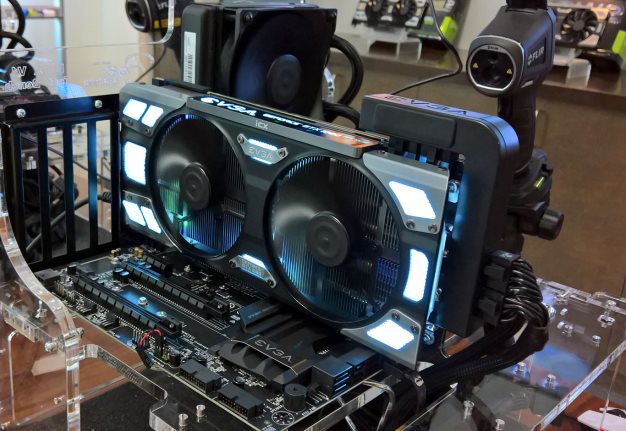EVGA GeForce GTX 1080 iCX FTW2 Review: Everything Detected, More Than Just A Cooler
Test System, Heaven v4.0 And Fire Strike
How We Configured Our Test Systems: We tested the graphics cards in this article on a Gigabyte X99 Gaming 5P motherboard powered by an Intel Core i7-5960X octa-core processor and 16GB of Corsair DDR4 RAM. The first thing we did when configuring the test system was enter the UEFI and set all values to their "high performance" settings and disable any integrated peripherals that wouldn't be put to use. The memory's X.M.P. profile was enabled to ensure optimal memory performance and the solid state drive was then formatted and Windows 10 Professional x64 was installed and fully updated. When the installation was complete, we installed all of the drivers, games, and benchmark tools necessary to complete our tests.
|
|
|
| Hardware Used: Intel Core i7-5960X (3GHz, Octa-Core) Gigabyte X99 Gaming 5P (Intel X99 Chipset) Radeon R9 Fury X GeForce GTX 1070 GeForce GTX 1080 EVGA GeForce GTX 1080 (SC + FTW2) 16GB Corsair DDR4-2133 OCZ Vertex 4 Integrated Audio Integrated Network |
Relevant Software: Windows 10 Pro x64 AMD Catalyst 17.1.2 NVIDIA GeForce Drivers v378.49 Benchmarks Used: Unigine Heaven v4 3DMark "Fire Strike" Thief MIddle-Earth: Shadow Of Mordor Ashes Of The Singularity Hitman 2016 VRScore Steam VR Performance Test |
|
|
|
Unigine's Heaven Benchmark v4.0 is built around the Unigine game engine. Unigine is a cross-platform, real-time 3D engine, with support for DirectX 9, DirectX 10, DirectX 11 and OpenGL. The Heaven benchmark -- when run in DX11 mode -- also makes comprehensive use of tessellation technology and advanced SSAO (screen-space ambient occlusion). It also features volumetric cumulonimbus clouds generated by a physically accurate algorithm and a dynamic sky with light scattering.


The EVGA GeForce GTX 1080 FTW2 with iCX actually trailed the SC card here, despite its higher clocks. There is a somewhat larger margin of error in this test (versus some of the other benchmarks) though, so consider the GTX 1080s roughly equal overall...
|
|
|
As you'd expect, the EVGA GeForce GTX 1080 FTW2 with iCX took the top spot in 3DMark Fire Strike, edging out the Founder's Edition GTX 1080 and the slightly lower clocked EVGA SC card. The AMD Radeon R9 Fury X was left in the dust.











